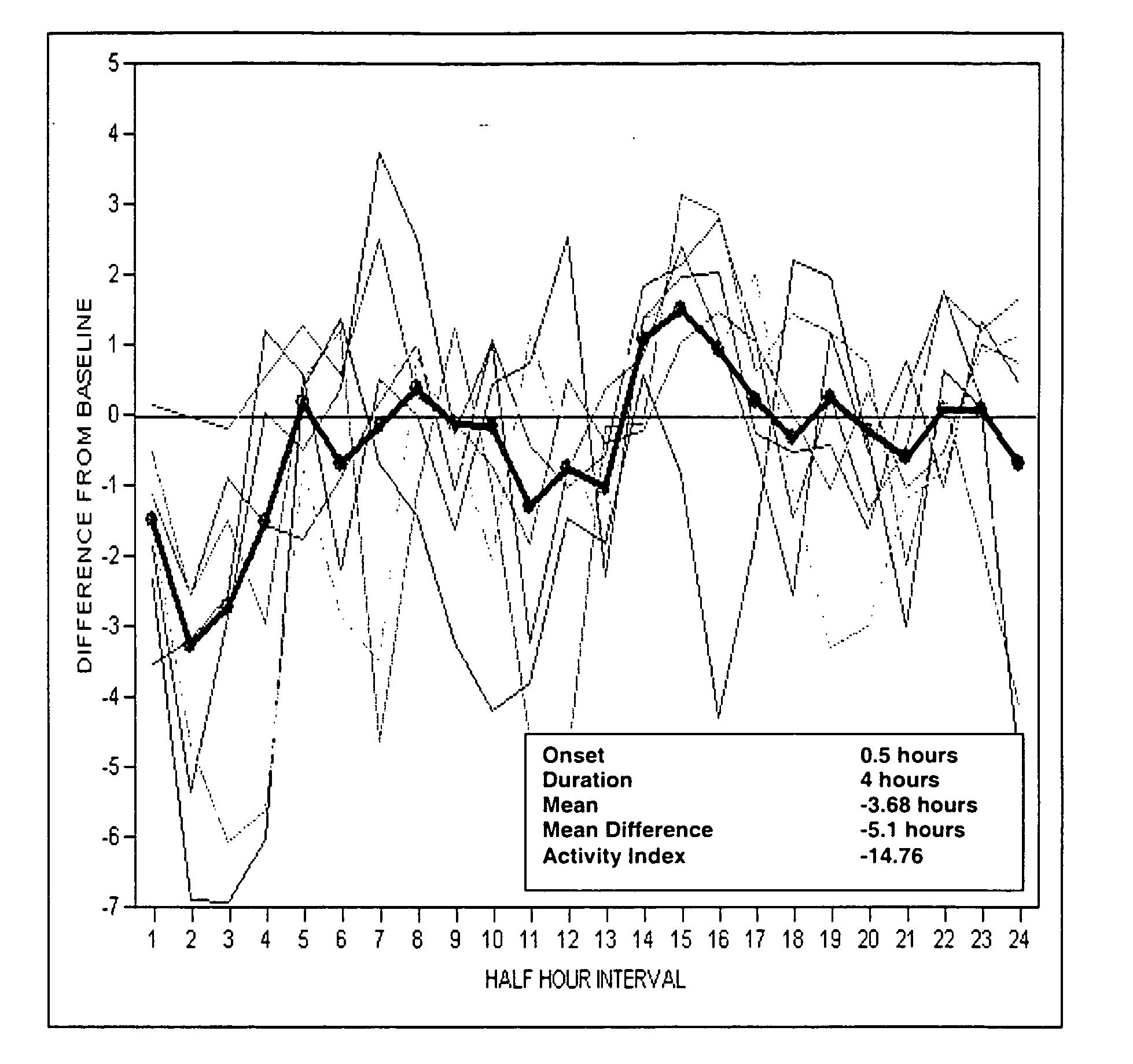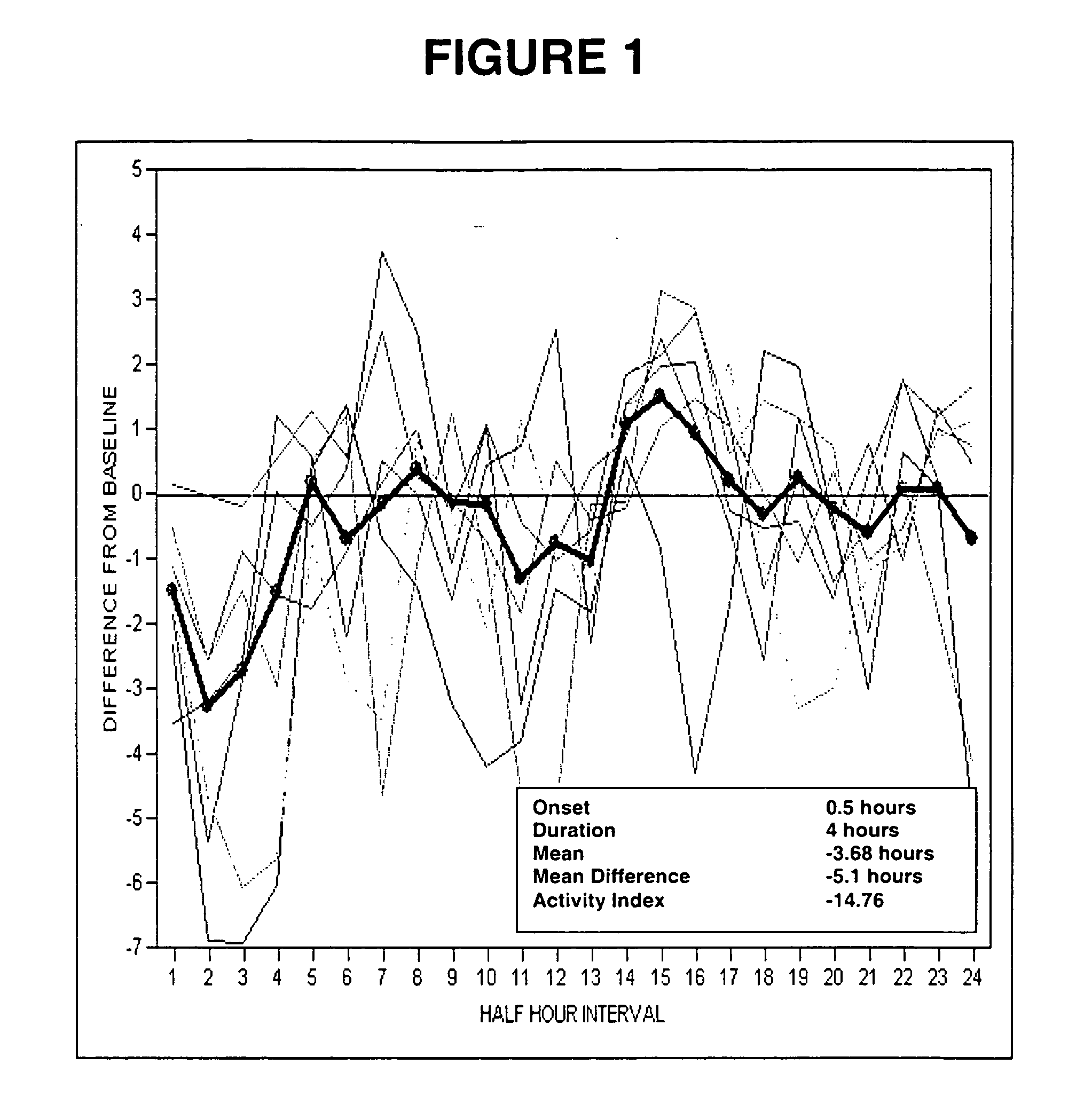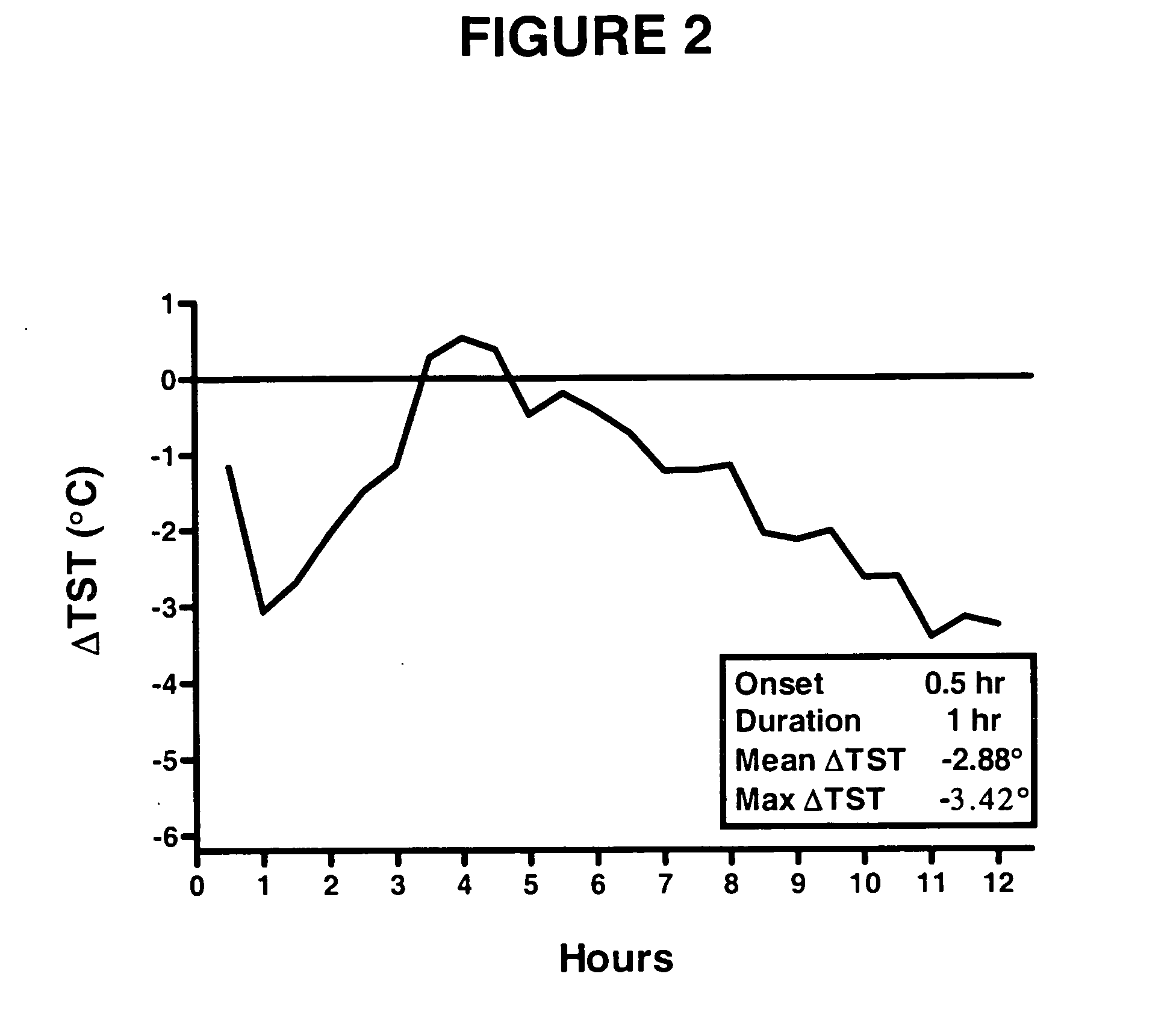Method for treating nervous system disorders and conditions
a technology of nervous system disorders and conditions, applied in the field of selective dopamine reuptake inhibitors, can solve the problems of affecting the sleep quality of patients, affecting the health of patients, and affecting the ability of patients to sleep,
- Summary
- Abstract
- Description
- Claims
- Application Information
AI Technical Summary
Problems solved by technology
Method used
Image
Examples
example 1
Functional Reuptake Bioassays of (−)-1-(4-methylphenyl)-3-azabicyclo[3.1.0]hexane and 1-[2-[bis(4-fluorophenyl)methoxy]ethyl]-4-(3-phenylpropyl)piperazine (GBR12909)
[0112] IC50 for dopamine reuptake inhibition at the dopamine transport (DAT), norepinephrine reuptake inhibition at the norepinephrine transporter (NET), and serotonin reuptake inhibition at the serotonin transporter (SERT) were measured in vitro with homogenized rat brain for (−)-1-(4-methylphenyl)-3-azabicyclo[3.1.0]hexane and 1-[2-[bis(4-fluorophenyl)methoxy]ethyl]-4-(3-phenylpropyl) (GBR12909). The results were as follows:
1-[2-[bis(4-fluoro-(−)-1-(4-phenyl)methoxy]ethyl]-methylphenyl)-3-aza-4-(3-phenylpropyl)bicyclo[3.1.0]hexanepiperazinehNET function1176 + / − 441uptake(EC50 in nm)hNET transporter440(IC50 in nm)hSERT function 977 + / − 131uptake(EC50 in nm)hSERT transporter170(IC50 in nm)hDAT transporter1(IC50 in nm)hDAT binding55%(% I at 10 μM)
example 2
Telemetry Testing of (−)-1-(4-methylphenyl)-3-azabicyclo[3.1.0]hexane and 1-[2-[bis(4-fluorophenyl)methoxy]ethyl]-4-(3-phenylpropyl)piperazine (G BR 12909)
[0113] Rats were injected subcutaneously with vehicle (2% Tween / 0.5% methylcellulose) or 30 mg / kg, sc test compound dissolved in 2% Tween / 0.5% methylcellulose. The effect of test compound is measured by evaluating the following parameters in this model: onset of action, duration of effect on TST, maximal change in TST and mean change in TST over the duration of the compound effect.
[0114] (−)-1-(4-Methylphenyl)-3-azabicyclo[3.1.0]hexane and 1-[2-[bis(4-fluorophenyl)methoxy]ethyl]-4-(3-phenylpropyl)piperazine (GBR12909) restored normal TST in an OVX-induced thermoregulatory dysfunction telemetry model (telemetry model) 30 mg / kg, sc.
[0115] The results of the administration of (−)-1-(4-methylphenyl)-3-azabicyclo[3.1.0]hexane and 1-[2-[bis(4-fluorophenyl)methoxy]ethyl]-4-(3-phenylpropyl)piperazine (GBR12909) at 1 dose (30 mg / kg, sc)...
example 3
Evaluation of Test Compounds in the Spinal Nerve Ligation (SNL) Model of Neuropathic Pain
Materials and Methods
[0116] Animal maintenance and research were conducted in accordance with the National Research Council's policies and guidelines for the handling and use of laboratory animals outlined in the Guide for the Care and Use of Laboratory Animals. The laboratory facility was licensed by the United States Department of Agriculture and accredited by the American Association for Accreditation of Laboratory Animal Care. Research protocols were approved by the Wyeth Institutional Animal Care and Use Committee in accordance with the guidelines of the Committee for Research and Ethical Issues of IASP (Zimmermann, 1983).
[0117] Subjects. Male Sprague-Dawley rats (Indianapolis, Ind.) weighing 150 to 200 g at time of arrival, were individually housed in wire cages in a climate-controlled room. A 12-hour light / dark cycle (lights on at 0630) was in effect, and food and water were available...
PUM
| Property | Measurement | Unit |
|---|---|---|
| Molar density | aaaaa | aaaaa |
| Inhibition | aaaaa | aaaaa |
Abstract
Description
Claims
Application Information
 Login to View More
Login to View More - R&D
- Intellectual Property
- Life Sciences
- Materials
- Tech Scout
- Unparalleled Data Quality
- Higher Quality Content
- 60% Fewer Hallucinations
Browse by: Latest US Patents, China's latest patents, Technical Efficacy Thesaurus, Application Domain, Technology Topic, Popular Technical Reports.
© 2025 PatSnap. All rights reserved.Legal|Privacy policy|Modern Slavery Act Transparency Statement|Sitemap|About US| Contact US: help@patsnap.com



